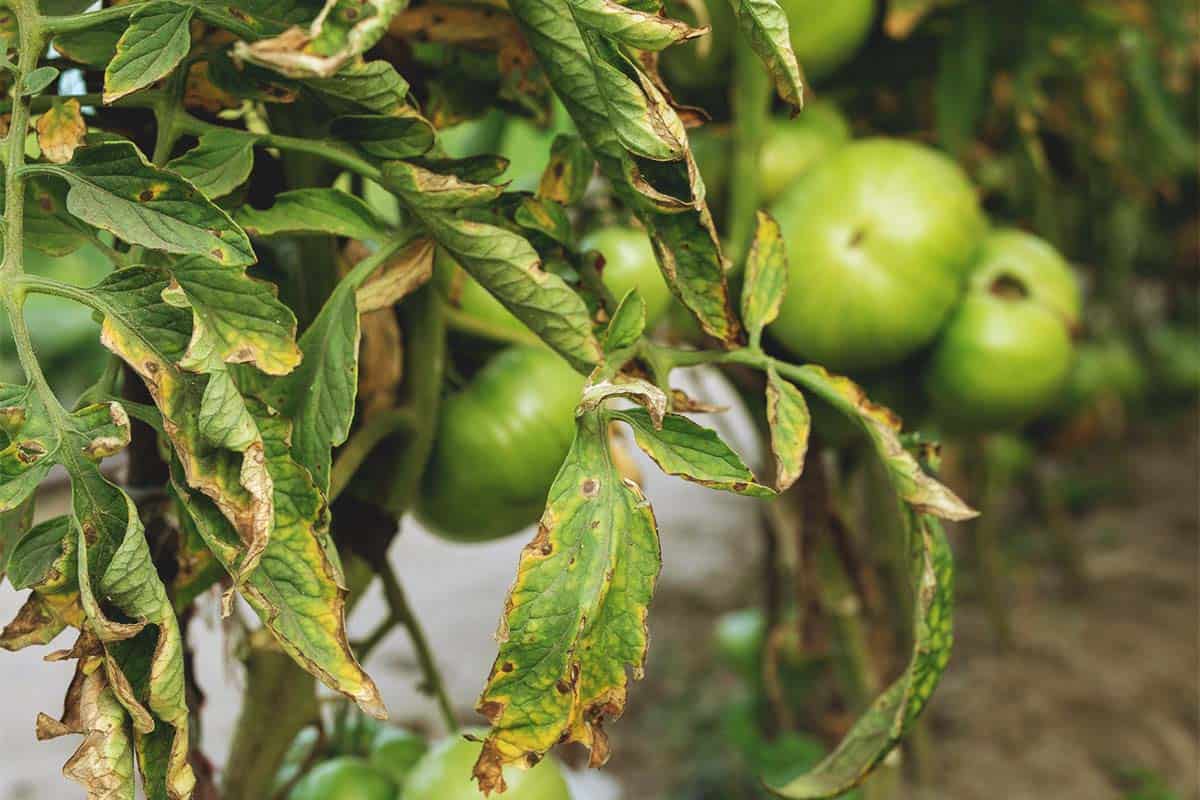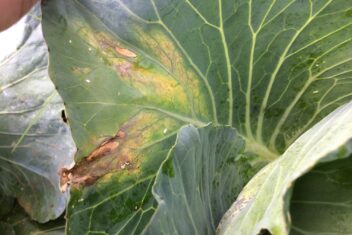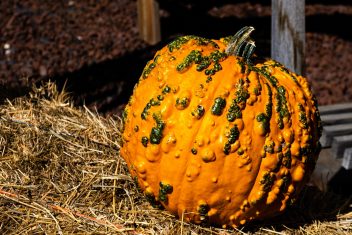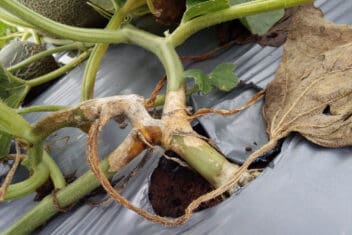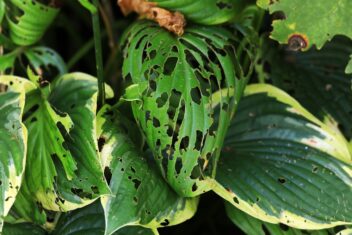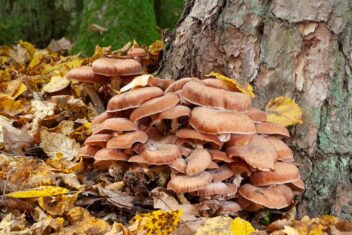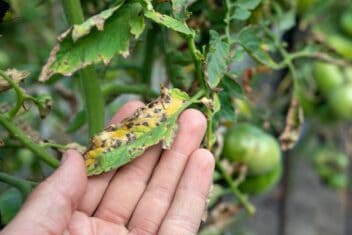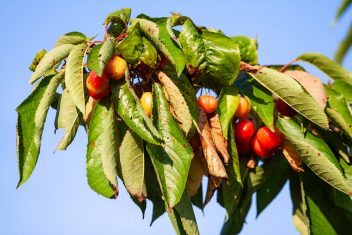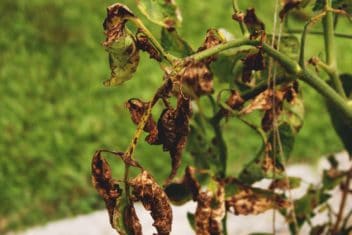Spotting yellowed, wilted leaves on your garden plants is a surefire way to ruin your day.
Yellow leaves can mean a whole bunch of things. You might have forgotten to water your plants. There may be a nutrient deficiency. Or maybe it’s a bit too hot for your plants to thrive.
Unfortunately, yellowed leaves may also be a sign of a disease like fusarium wilt.
How can you tell when a nasty fungus has overtaken your plant? How can you fix your sad-looking plant after it is infected by a pathogen? Read on to find out more about this plant disease.
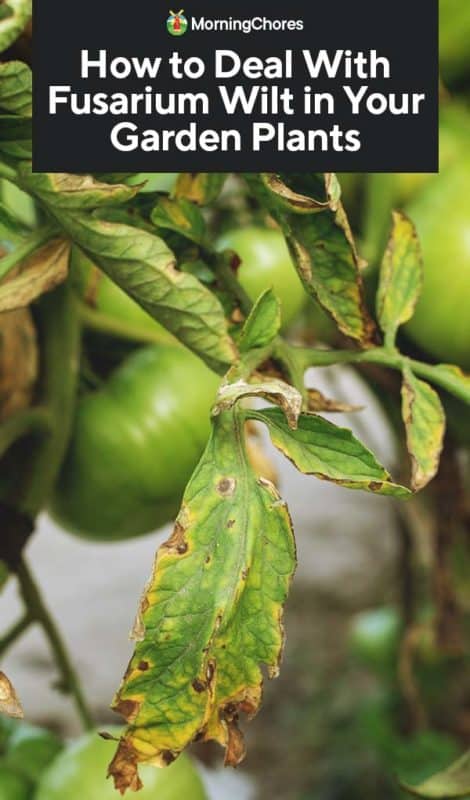
What is Fusarium Wilt?
Fusarium wilt is a close disease cousin of verticillium wilt. Both are fungal diseases that infect a wide variety of plants. The pathogen Fusarium oxysporum causes fusarium wilt.
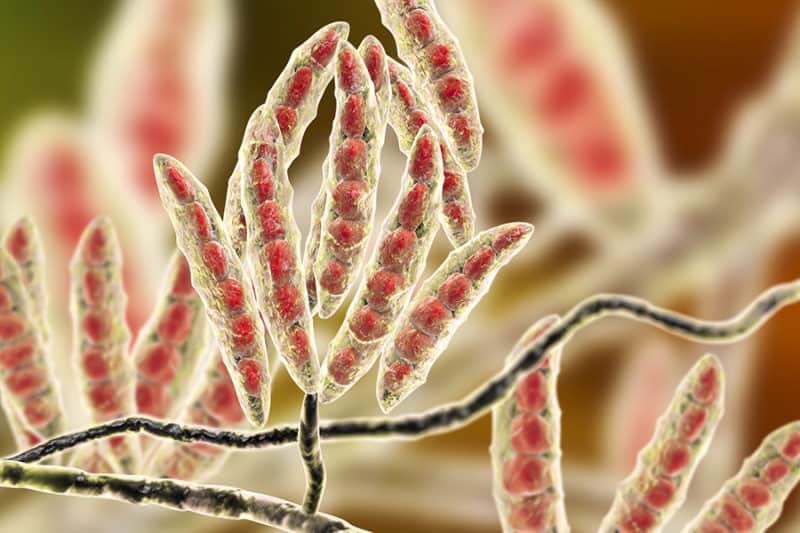
It’s a hardy pathogen that can survive in many conditions and climates -even desert and arctic regions. That said, it thrives best in warm, moist soil.
In cold weather, plants may not show symptoms, but that doesn’t mean the pathogen isn’t lurking beneath the surface. As the soil and weather warm, symptoms may eventually appear.
Fusarium wilt can survive for a long time, even in low temperatures.
How Does Fusarium Wilt Spread?
This fungal disease typically spreads via contaminated soil. Poorly cleaned garden tools are another source of transmission. Seeds may also become contaminated with the pathogen.
The fungus usually finds its way into the vascular system via some kind of open wound on plant material. It can end up on plant matter through splashing water and can also infiltrate the vascular system by way of plant roots.
Signs of Fusarium Wilt
The main signs of this fungal disease include:
- Droopy lower leaves
- Stunted growth
- Yellowing of leaves
- Dropped leaves
- Necrosis
- Browning of the vascular system
There are different types of fusarium wilt (divisions called forma specialise), and each affects a different species of plant. Here are a few examples of these divisions:
- Fusarium oxysporum f. sp. batatas affects sweet potato plants
- Fusarium oxysporum f. sp. canariensis impacts propagated palms
- Fusarium oxysporum f. sp. cubense infects banana plants
- Fusarium oxysporum f. sp. lycopersici affects tomato plants
- Fusarium oxysporum f. sp. melonia affects melons plants
Symptoms vary slightly depending on the specific variation of the pathogen and infected plant.
For instance, stunted growth and leaf drop are typical in sweet potato plants infected with fusarium wilt. Infected banana plants have leaves that turn yellow and the plant will be wilted and sickly.
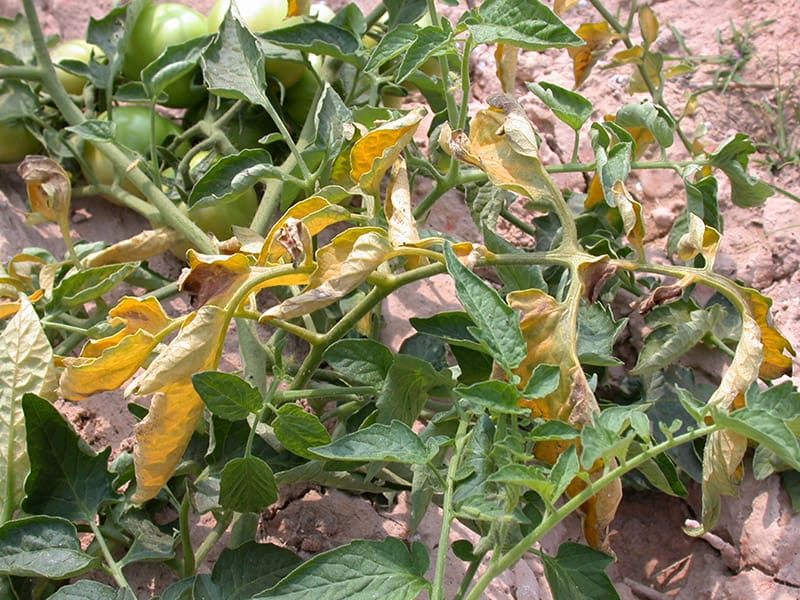
In tomatoes, the infection causes yellow and droopy leaves along with browned leaf veins and reduced fruit yield. Fusarium wilt causes melon seeds to dampen-off. It also causes wilting and stunted growth in mature plants.
In tomatoes and other fruiting plants, the symptoms of the disease usually show up as fruits begin to mature. Eventually, plants infected with fusarium wilt will succumb to the infection and die.
Which Plants Are Vulnerable to Fusarium Wilt?
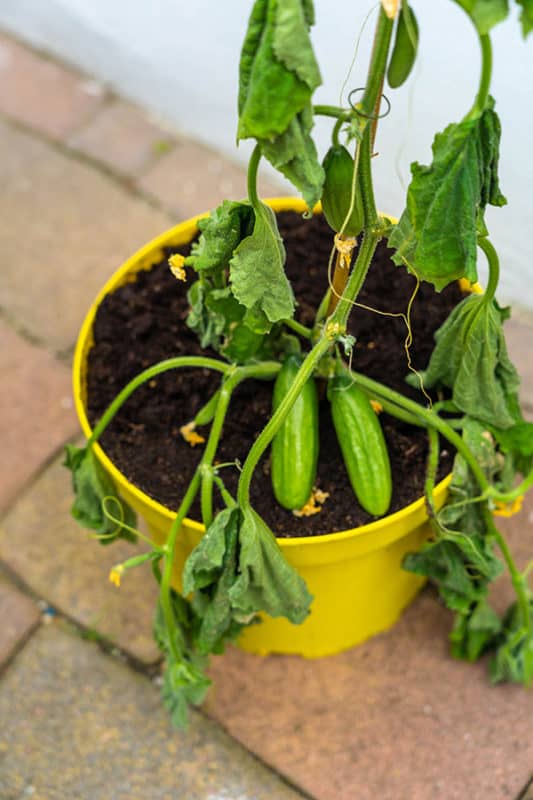
Fusarium wilt attacks various plants but some of the most susceptible include:
- Tomatoes
- Peppers
- Eggplants
- Legumes (e.g., lentils)
- Cucurbits (e.g., cucumbers, melons)
- Tobacco
- Sweet potatoes
- Bananas
- Herbs
How to Prevent Fusarium Wilt
Because fusarium wilt survives in the soil for a long time, crop rotation is not an effective prevention method – though I’d still heartily recommend continuing this practice, since it’s an effective pest-control and disease-control method, regardless.
Since fusarium wilt spreads through diseased plant matter, it’s imperative that gardeners tidy up at the end of the season and get rid of leftover plant material – whether infected or not.
It’s also vital to sterilize garden equipment and tools at the end of the season. Don’t forget to sanitize things like support structures (e.g., bamboo poles, tomato cages, etc.)
Fusarium wilt thrives in moist, wet conditions and loves warm, humid soil. Therefore, it’s more likely to take up residence in gardens with poor drainage.
Improving soil conditions over time may help to mitigate the spread of the disease. Avoid setting up a garden bed or planting in waterlogged areas.
Certain pests, like cucumber beetles, can also spread the disease. Controlling these known carriers can help mitigate the spread of fusarium wilt. Certain types of weeds (e.g., crabgrass and pigweed) are also susceptible to the disease and, if not removed from garden beds, may spread to non-weedy plants.
There’s evidence that high-nitrogen fertilizers increase plant vulnerability to fusarium wilt. Avoid using high-nitrogen fertilizers and opt for slow-release organic options whenever possible.
You can also help support your plants by avoiding any damage. Nicks from trimming or digging can create an opening for the virus to take hold. Be careful when working in your garden.
Choose Resistant Varieties
How else can you avoid this disease? Choose disease-resistant varieties when shopping at your local nursery or buying seeds at the start of the season. You should also seek to purchase certified disease-free seed whenever possible.
If you have a problem with tomatoes and nightshades contracting fusarium wilt each year, consider planting only disease-resistant varieties – there are plenty of options, especially with tomatoes.
Be cautious when shopping for seedlings. Don’t bring home plants with yellowed, wilted leaves. Even if the plant seems to perk up, it may be infected with a disease (including fusarium wilt) that can spread to the rest of your garden plants.
How do you know if a particular cultivar is resistant to fusarium wilt? Varieties are labeled ‘VF.’
Note that even disease-resistant varieties are not entirely immune to fusarium wilt. They are resistant. Plants in poor health and grown in poor soils may still be susceptible to the pathogen even if they’re disease-resistant.
How to Treat Fusarium Wilt
It’s best to get rid of disease plants to prevent the spread of fusarium wilt. There’s no cure for this type of fungal infection, so it’s essential to remove and destroy any affected plant matter.
Since most plants infected with this disease die before maturing, there’s not much point in keeping disease plants around. Infected tomato plants, for instance, won’t produce many fruits, it any at all, so you’re better off tossing the whole plant than leaving it to sit in your garden.
You can, however, try to control the presence of the pathogen by attempting to eradicate it from your soil. Here are two ways to go about this:
Apply fungicides: The use of fungicides can help control fusarium wilt, but they’re not effective in every instance. Mycostop is an example of a biological fungicide. The product prevents pathogens from infecting plants via plant roots. It can be used to combat a variety of plant diseases.
Alter soil pH: Raising the pH of your soil is another potential strategy for combating this disease. A soil pH of between 6.0 and 7.0 can help control the pathogen since it seems to thrive in acidic soil.
If prevention and control methods don’t reduce your instances of fusarium wilt, the next option is to solarize the soil. Cover affect garden beds with a clear plastic covering and wait at least four weeks before removing.

This must be done during the hottest part of the year for maximum effectiveness. The high heat will kill all pathogens within a few inches of the soil’s surface. The process also kills weeds and insects.
Kick Fusarium Wilt to the Curb
Have you ever had this disease in your garden? How did you deal with it? Any tips you’d like to share? Put them in the comments.
